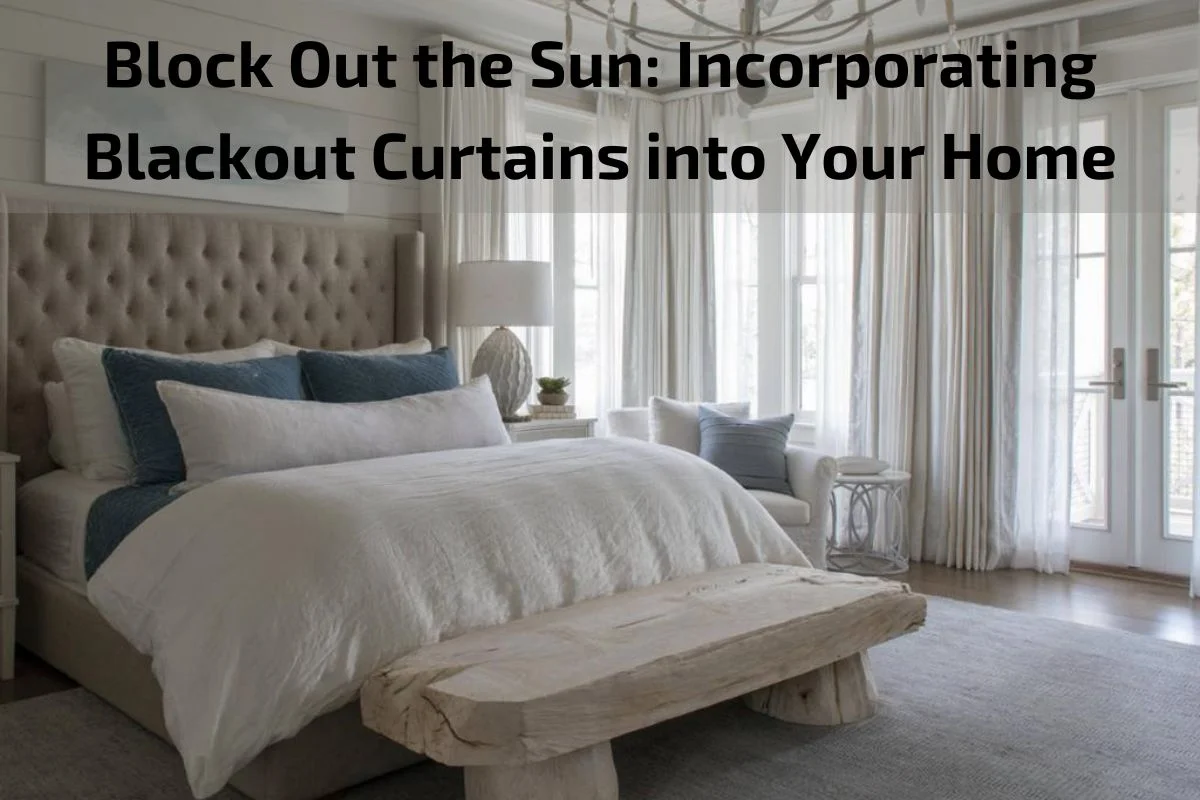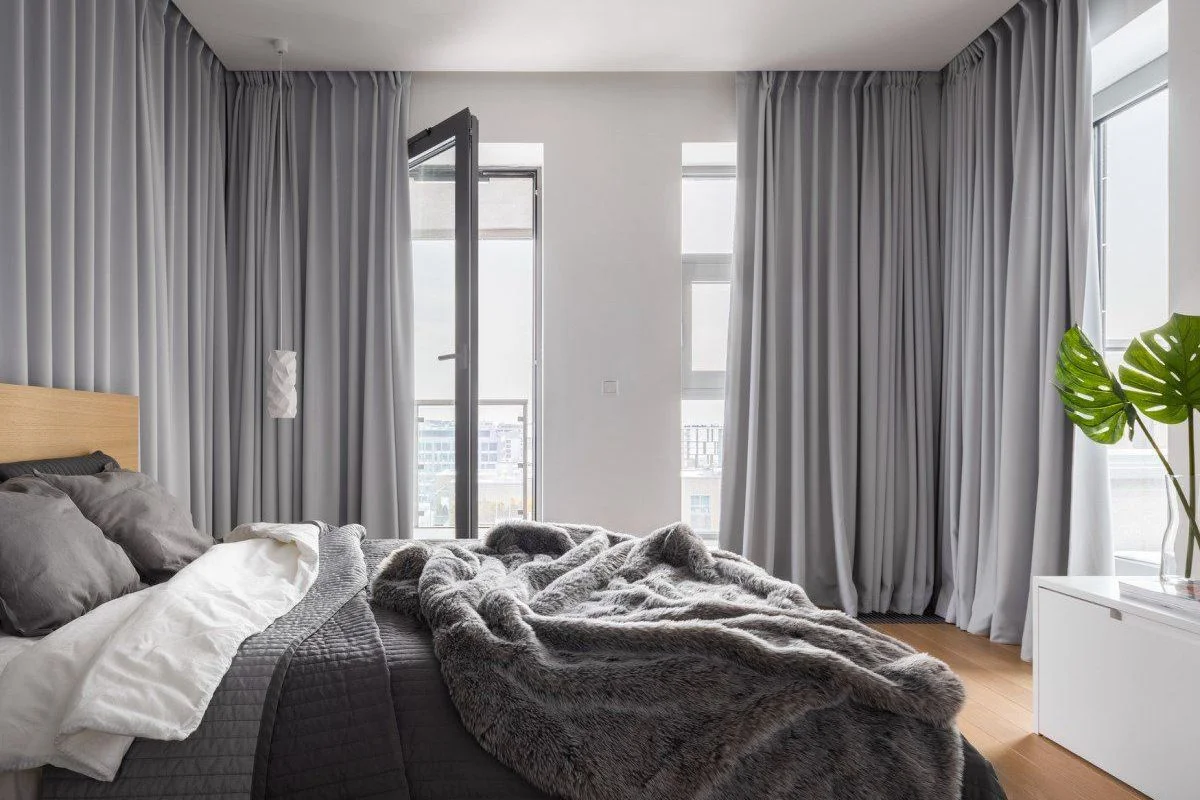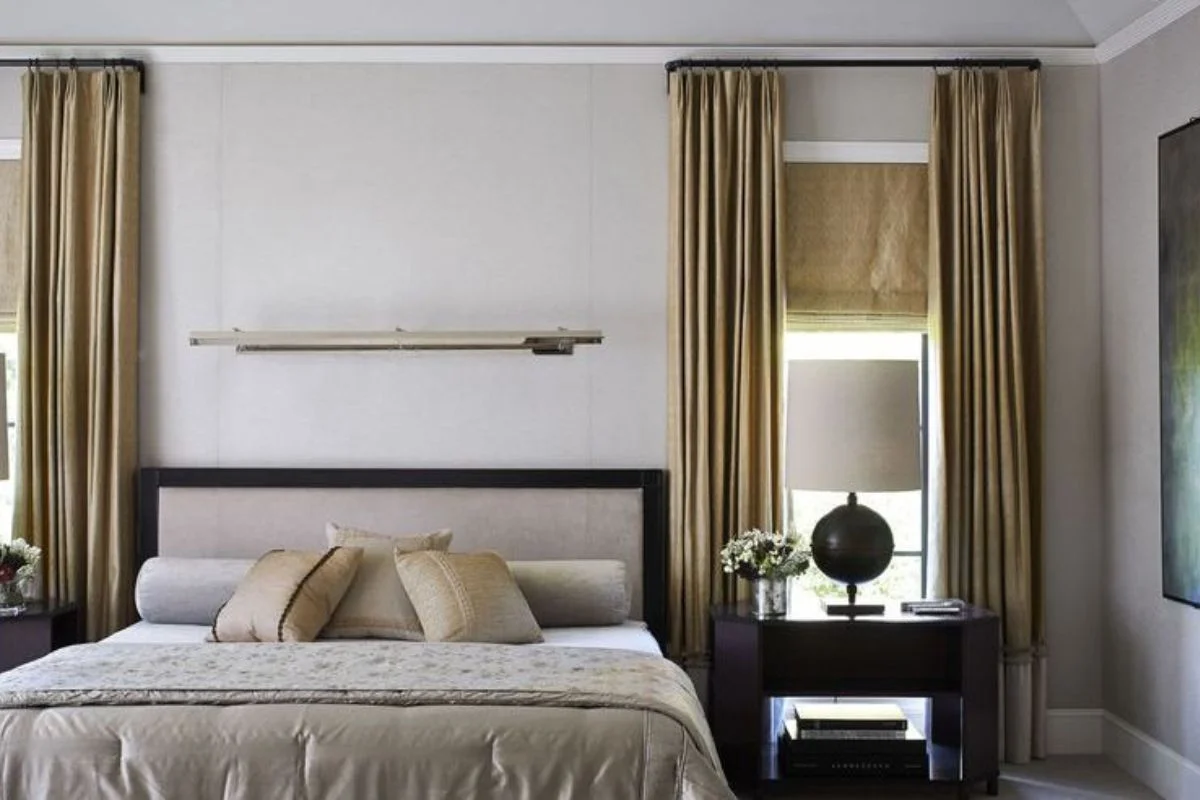Block Out the Sun: Incorporating Blackout Curtains into Your Home

Welcome to our guide on incorporating blackout curtains into your home to block out the sun and create a comfortable living environment. With their ability to effectively block light and provide privacy, blackout curtains have become a popular choice for homeowners seeking to enhance the functionality and comfort of their living spaces.
In this guide, we’ll explore the benefits of blackout curtains and provide you with inspiration and tips for seamlessly incorporating them into your home decor. Whether you’re looking to create a peaceful retreat in the bedroom, reduce glare in the living room, or ensure privacy in the nursery, blackout curtains offer a versatile solution for addressing a variety of needs.
Join us as we delve into the world of blackout curtains, exploring their practical benefits, considerations for choosing the right curtains, and styling tips for maximizing their effectiveness and aesthetic appeal. With their ability to block out sunlight, reduce outside noise, and regulate room temperature, blackout curtains offer a functional and stylish addition to any room in your home.
Brief Overview of the Purpose and Benefits of Blackout Curtains
Blackout curtains serve as a versatile solution for controlling light and enhancing privacy within a home environment. These specialized curtains are designed to block out external light sources effectively, offering a range of benefits to homeowners. By creating a dark and secluded atmosphere, blackout curtains promote better sleep, reduce energy costs, and contribute to a more comfortable and private living space. Their ability to minimize external noise and regulate room temperature further enhances their value in modern home decor.
Advantages And Disadvantages of Blackout Curtains
Blackout curtains offer a range of advantages that contribute to their popularity as a preferred choice for window treatments. However, like any product, they also come with certain disadvantages. Let’s explore both sides of the equation:
Advantages:
Light Control: Blackout curtains effectively block out external light sources, creating a dark and secluded environment ideal for sleeping or watching movies during the daytime.
Privacy Enhancement: By preventing visibility from outside, blackout curtains enhance privacy within the home, making them suitable for bedrooms, living rooms, and other areas where privacy is desired.
Energy Efficiency: Blackout curtains provide insulation against heat and cold, helping to regulate room temperature and reduce energy costs by minimizing the need for heating or air conditioning.
Noise Reduction: The thick, dense fabric of blackout curtains helps absorb sound, reducing external noise levels and creating a quieter and more peaceful indoor environment.
Protection of Furniture and Fabrics: By blocking harmful UV rays, blackout curtains help protect furniture, carpets, and fabrics from fading and sun damage over time.
Disadvantages:
Limited Design Options: Compared to regular curtains, blackout curtains may offer fewer design options in terms of colors, patterns, and textures, limiting the ability to match them with existing décor styles.
Higher Cost: Blackout curtains tend to be more expensive than standard curtains due to their specialized construction and materials, which may pose budget constraints for some homeowners.
Maintenance Challenges: The thick and heavy fabric of blackout curtains may require more effort to clean and maintain compared to lighter curtains, as they may be prone to collecting dust and dirt more easily.
Limited Natural Light: While blackout curtains effectively block out external light sources, they also limit the amount of natural light that enters the room, which may not be desirable for individuals who prefer bright and airy spaces.
Installation Requirements: Due to their weight and density, blackout curtains may require sturdier curtain rods and hardware for proper installation, adding to the overall cost and complexity of the window treatment.
Choosing the Right Blackout Curtains
Selecting the perfect blackout curtains for your space involves considering several key factors to ensure they meet your functional needs and complement your décor style. Here are some essential tips to help you choose the right blackout curtains:
Fabric Type and Thickness: Opt for blackout curtains made from heavyweight fabrics such as polyester, cotton, or velvet, as they provide better light-blocking capabilities. Look for curtains with multiple layers or a blackout lining to enhance their effectiveness.
Length and Width: Measure the dimensions of your windows accurately to determine the appropriate length and width of the curtains. Choose curtains that are long enough to reach the floor or slightly puddle for a luxurious look. Ensure the width of the curtains provides ample coverage when closed to block out light effectively.
Header Style and Hanging Options: Consider the header style of the curtains, such as grommet, rod pocket, or pinch pleat, and choose one that complements your decor aesthetic. Additionally, select the appropriate hanging option based on your curtain rod type and installation preferences.
Color and Design: Decide on a color and design scheme that harmonizes with your existing decor and personal style. Opt for neutral tones for a timeless and versatile look, or choose bold colors or patterns to make a statement and add visual interest to the room.
Special Features: Look for blackout curtains with additional features such as thermal insulation, noise reduction, or energy efficiency, depending on your specific needs and preferences. These features can enhance the functionality of the curtains and improve the overall comfort of your space.
Budget Considerations: Determine your budget for blackout curtains and explore options within your price range. While high-quality blackout curtains may come with a higher price tag, they offer better durability and performance in the long run.
Read Reviews and Compare Brands: Research different blackout curtain brands and read reviews from other customers to gauge the quality and performance of the curtains. Compare features, materials, and customer feedback to make an informed decision.
Sample Swatches and Testimonials: If possible, request sample swatches of blackout curtain fabrics to assess their texture, weight, and light-blocking capabilities firsthand. Additionally, seek testimonials or recommendations from friends, family, or interior design professionals to guide your selection process.
Blackout Curtain Styles and Designs
Blackout curtains come in a variety of styles and designs to suit different preferences and complement various decor themes. Here are some popular blackout curtain styles and designs to consider for your home:
Solid Colors: Solid color blackout curtains offer a classic and versatile option that can seamlessly blend with any decor style. Choose from a wide range of neutral tones such as white, beige, gray, or black to create a timeless look that enhances the ambiance of your space.
Textured Fabrics: Textured blackout curtains add depth and dimension to your windows, creating visual interest and tactile appeal. Opt for curtains with subtle textures like linen, faux silk, or jacquard weaves to add a touch of sophistication and elegance to your room.
Patterned Prints: Patterned blackout curtains allow you to infuse personality and character into your space with bold prints, geometric patterns, or floral motifs. Experiment with vibrant colors and eye-catching designs to make a statement and showcase your unique style.
Two-Tone or Color Block: Two-tone or color block blackout curtains feature contrasting colors or panels, adding a modern and contemporary touch to your decor. Mix and match complementary hues or opt for contrasting shades to create visual contrast and focal points in the room.
Embroidered Details: Embroidered blackout curtains add a luxurious and refined touch to your windows, featuring intricate stitching, embellishments, or motifs. Choose curtains with delicate embroidery along the edges or throughout the fabric to create an elegant and sophisticated look.
Sheer Overlay: Sheer overlay blackout curtains combine the functionality of blackout curtains with the softness and delicacy of sheer panels. These curtains feature a layer of sheer fabric overlaying the blackout material, allowing diffused light to filter through while still providing privacy and light control.
Thermal Backing: Thermal blackout curtains feature a specialized backing that helps regulate room temperature by insulating against heat loss in the winter and heat gain in the summer. These curtains not only block out light but also help reduce energy costs and maintain a comfortable indoor environment.
Customizable Options: Explore customizable options for blackout curtains, including adjustable lengths, pleat styles, and hardware finishes. Custom curtains allow you to tailor the curtains to your specific window dimensions and design preferences for a personalized touch.
Maintaining and Cleaning Blackout Curtains
Proper maintenance and cleaning are essential to preserve the appearance and functionality of your blackout curtains. Follow these tips to keep your curtains looking fresh and pristine:
Regular Dusting: Use a handheld vacuum cleaner or a soft brush attachment to remove dust and debris from the surface of your blackout curtains. Gently vacuum along the folds and seams to ensure thorough cleaning.
Spot Cleaning: Address stains and spills promptly to prevent them from setting into the fabric. Blot the affected area with a clean, damp cloth and a mild detergent solution. Avoid rubbing or scrubbing vigorously, as this can damage the fabric.
Machine Washing: Check the care label on your blackout curtains to determine if they are machine washable. If so, wash them in cold water on a gentle cycle with a mild detergent. Avoid using bleach or harsh chemicals, as they can damage the fabric and affect the blackout lining.
Hand Washing: For delicate blackout curtains or those with intricate details, hand washing may be the preferred method. Fill a basin or tub with cold water and a small amount of gentle detergent. Gently agitate the curtains in the soapy water, then rinse thoroughly with clean water.
Drying: After washing, hang your blackout curtains to air dry or tumble dry on a low heat setting. Avoid high heat, as it can damage the fabric and affect the blackout lining. Smooth out any wrinkles or creases while the curtains are still damp to help them dry evenly.
Ironing or Steaming: If your blackout curtains become wrinkled during washing or drying, iron them on a low heat setting or use a handheld garment steamer to remove wrinkles. Always iron or steam the curtains on the reverse side to avoid damaging the fabric.
Professional Cleaning: For stubborn stains or heavily soiled curtains, consider professional cleaning services. Dry cleaning may be recommended for curtains with delicate fabrics or intricate details that cannot be safely washed at home.
Regular Maintenance: Inspect your blackout curtains periodically for any signs of wear and tear, such as loose threads or fading. Repair minor damages promptly to prevent them from worsening over time and compromising the integrity of the curtains.
Conclusion
In conclusion, blackout curtains offer a practical and stylish solution for controlling light, enhancing privacy, and creating a comfortable living environment. With their ability to block out external light sources effectively, blackout curtains contribute to better sleep quality, energy efficiency, and overall well-being.




